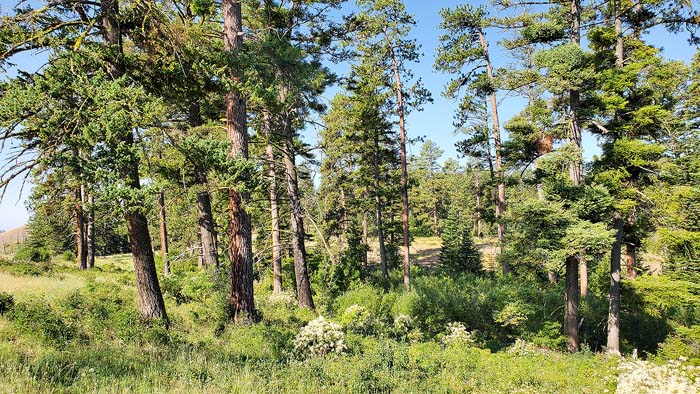Study shows a few large trees in E. Oregon store most carbon
Published 2:00 pm Friday, November 20, 2020

- A stand of ponderosa pines and Douglas fir. Large trees — those 21 inches in diameter or bigger — make up 3% of national forests in central and eastern Oregon, yet they store 42% of above-ground carbon in their trunks, stems and branches, according to a study published Nov. 5 in the journal Frontiers in Forests and Global Change.
When the U.S. Forest Service recommended lifting a 25-year-old ban on logging large trees in six national forests across central and eastern Oregon, the idea was to create healthier landscapes better adapted for drought, disease and more intense wildfires.
Trending
New research suggests the proposal could, however, undermine the forests’ role in mitigating climate change by absorbing carbon from the atmosphere.
Large trees, defined as 21 inches in diameter or bigger, make up 3% of the forests, yet they store 42% of above-ground carbon in their trunks, stems and branches, according to a study published Nov. 5 in the journal Frontiers in Forests and Global Change.
David Mildrexler, an ecologist with the Eastern Oregon Legacy Lands in Joseph, Ore., led the study to inform future forest management decisions.
Trending
“Providing this information, I hope, will allow everyone to understand that these large trees play a very important role in our forest ecosystems,” Mildrexler said. “We should think very carefully before we start with widespread removals of them.”
Earlier this year, the Forest Service proposed amending its rule that forbid cutting 21-inch-diameter trees in the Umatilla, Wallowa-Whitman, Malheur, Ochoco, Deschutes and Fremont-Winema national forests — part of a broader set of environmental regulations known as the Eastside Screens.
Instead of a blanket ban, the amendment would turn the 21-inch standard into a guideline, allowing for some logging of large trees in areas where land managers say it would benefit the forests.
For example, the Pacific Northwest Research Station issued a report in February which concluded that removing some large trees, especially undesirable shade-tolerant species, could help protect old-growth ponderosa pine and Douglas fir by reducing competition for moisture and eliminating ladder fuels that drive larger, hotter wildfires.
But Mildrexler said the role large trees play as a carbon sink cannot be understated.
“As these trees continue to grow over the next 10-20 years, they will continue to rapidly accumulate more carbon,” he said. “Letting these big trees grow bigger is absolutely important to solving climate change. It would also be good for protecting water and fisheries, habitat and wildlife, and cultural values that we value for our forests.”
Mildrexler and his team analyzed 3,335 forest inventory plots across the six national forests as part of the study. Specifically, they were interested in looking at the size and composition of five main species, including ponderosa pine, Douglas fir, Engelmann spruce, grand fir and western larch.
Using that data, Mildrexler said they could use species-specific equations that allowed them to determine how much above-ground carbon was stored in the larger trees.
“You can see there is a very disproportionate amount of carbon that is stored in these large trees,” he said. “That is consistent with other studies globally, that in some forest systems we find as much as half of the above-ground carbon is stored in the largest 1% of the trees.”
Stephen Baker, a spokesman for the Forest Service’s Pacific Northwest Region office in Portland, said the agency recently finished its public comment period for the Eastside Screens revision, and a final rule is expected by spring 2021.
Carbon storage is one of the topics that will be analyzed in the final environmental assessment, Baker said.
“We’re looking at how to best balance multiple values and priorities, including managing for wildfire and protecting wildlife habitat,” Baker wrote in an email.
Andy Geissler, federal timber program director for the American Forest Resource Council, said the carbon study further validates the proposed Eastside Screens amendment, allowing for the harvest of some large trees to protect others amid shifting conditions.
AFRC, a timber industry group, submitted its comments on the Eastside Screens, arguing that a more adaptive 21-inch harvest rule will provide land managers with the flexibility to meet desired forest conditions.
“I think it’s easy to look at this paper and say, if these large trees are storing this much carbon, we should leave them alone,” Geissler said. “That fails to recognize that these forests are dynamic. They are competing for resources … Nothing that I read in this paper took me aback and made me think the Forest Service was going down the wrong path.”









